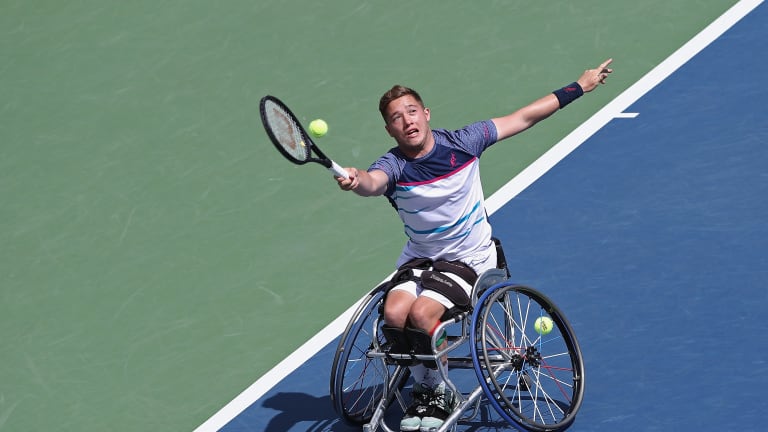US Open
At the US Open, wheelchair tennis takes center stage
By Sep 05, 2019US Open
Post-2024 US Open WTA storylines: The Age of Aryna; what's next for Swiatek and Gauff?
By Sep 09, 2024US Open
Post-2024 US Open ATP storylines: The race between Alcaraz and Sinner for No. 1 ... and more
By Sep 09, 2024US Open
Jannik Sinner’s US Open title run won’t clear the air around him entirely
By Sep 09, 2024US Open
Taylor Fritz fails in US Open final, but hope springs for American men's tennis
By Sep 09, 2024US Open
Jannik Sinner storms to second major title, defeats Swift, Kelce-backed Taylor Fritz at US Open
By Sep 08, 2024US Open
Jessica Pegula's willingness to take chances paid off at the US Open
By Sep 08, 2024US Open
Aryna Sabalenka won her first US Open by learning from her past heartbreaks in New York
By Sep 08, 2024US Open
Can Taylor Fritz beat Jannik Sinner and end a 21-year title drought? | US Open men's final preview
By Sep 08, 2024US Open
Aryna Sabalenka claims 2024 US Open title, notches third Grand Slam victory over Jessica Pegula
By Sep 07, 2024US Open
At the US Open, wheelchair tennis takes center stage
Thursday marks the beginning of wheelchair and quad tournaments, with two doubles matches opening Arthur Ashe Stadium.
Published Sep 05, 2019
Advertising

At the US Open, wheelchair tennis takes center stage
© 2017 Getty Images
Advertising
Advertising

At the US Open, wheelchair tennis takes center stage